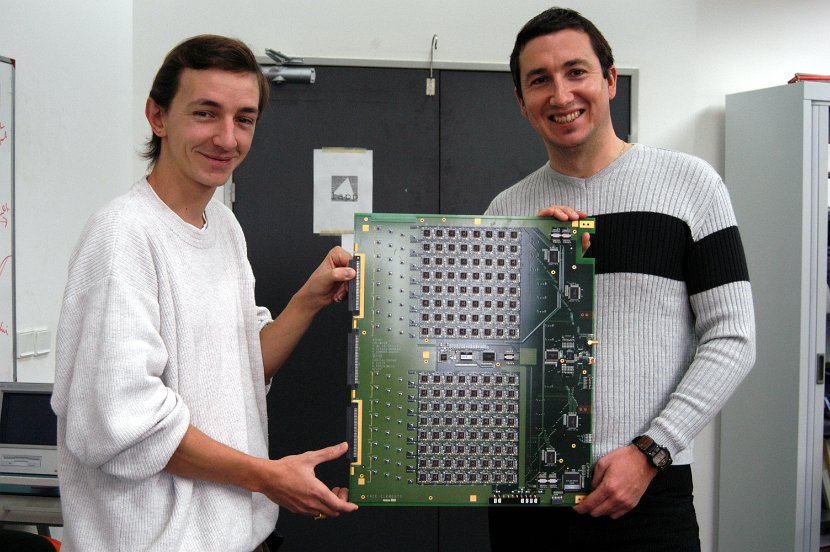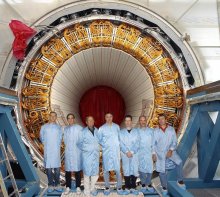The 30th anniversary of the ATLAS collaboration
Thirty years ago, on 1 October 1992, the ATLAS collaboration presented its letter of intent for the construction of a new detector at the future Hadron Collider (LHC). This letter of intent was signed by a long list of institutes, including the LAPP, that has therefore contributed to the design and construction of this detector from the very beginning.
The work of the LAPP team in ATLAS
In particular, LAPP has been involved in the construction of the liquid argon calorimeters and in the design and maintenance of the software that orchestrates the operation of all the calorimeter’s electronic cards.
The calorimeter’s accuracy and robustness played an important role in the discovery of the Higgs boson twenty years later, in 2012. Indeed, the two-photon decay channel (visible only in the electromagnetic calorimeter) was the most important in the discovery.
It therefore took twenty years of hard work by the team of researchers and engineers at LAPP (and other partner institutes) to achieve this result. Twenty years spent designing the calorimeter, building it, installing it, calibrating it and understanding it.
One example of this long-term work was the design and manufacture of the liquid argon calorimeter calibration boards, started in 1996 and completed ten years later, in time for being intalled in the detector for an expected start-up in 2008. These electronic cards allow a pulse of known amplitude to be sent to the 200 000 or so cells of the Liquid Argon Calorimeter, in order to understand their electronic response. This process provides a precise calibration of the calorimeter as well as obtaining excellent uniformity between the cells, which will eventually allow excellent photon and electron energy resolution to be achieved.

LAPP physicists have been involved in the whole chain of reconstruction and analysis of the Higgs boson, including photon energy calibration, photon identification, background extraction and statistical analyses that led to the final result [1]. Over the last thirty years, the group has also diversified and became involved in the analysis of Standard Model processes, and in the direct search for new physics.
ATLAS starts taking in new data after a series of improvements
Now, thirty years later, the ATLAS collaboration has published nearly 1000 papers, presenting results that have pushed the boundaries of our knowledge of the Standard Model of particle physics. The ATLAS detector is now resuming data recording after a two-year hiatus for a revamp of the detectors and the collider. The LAPP team has been actively involved in improving the triggering system of the liquid argon calorimeters, making it more accurate, and thus better able to select rare events to further push the limits of the Standard Model.
In 2022, the group still has many exciting projects, such as the construction of a pixel detector for the high-luminosity phase of the LHC (HL-LHC), or the re-interpretation of the data using effective field theory to track down the effects of new physics. The calibration boards and the system that orchestrates the operation of all the calorimeter electronic boards are also being replaced for the HL-LHC, a job that started in 2017 and will last… 20 years?
More information:
- Letter of intent for the construction of a new detector at the future Hadron Collider (LHC): https://cds.cern.ch/record/291061/f…


